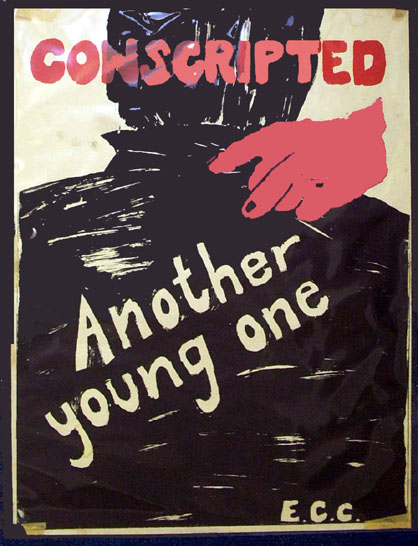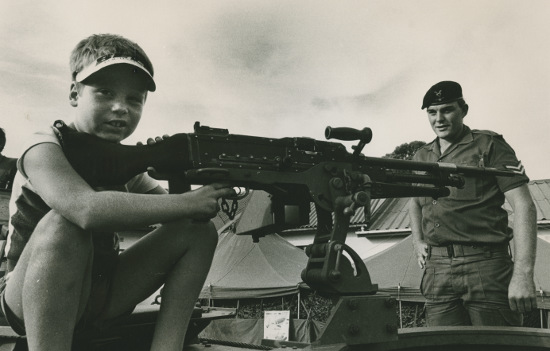 During the late 1960s and the 1970s South African had become an increasingly militarised state as the government became more and more reliant on the army to maintain control. By the 1980s, the government under the premiership of P.W. Botha talked of facing a ‘total onslaught’ of resistance forces both within South Africa and in its neighbouring or frontline states.
During the late 1960s and the 1970s South African had become an increasingly militarised state as the government became more and more reliant on the army to maintain control. By the 1980s, the government under the premiership of P.W. Botha talked of facing a ‘total onslaught’ of resistance forces both within South Africa and in its neighbouring or frontline states.
The government tried to prevent neighbouring countries from supporting the liberation movements through a policy of destabilisation. The South African Defence Force (SADF) regularly launched cross-border raids on suspected ANC bases in neighbouring countries. It also supported guerrilla groups in Mozambique (RENAMO), Angola (UNITA) and Namibia, in an attempt to bring down the existing socialist governments in those countries.
Since Angola and Mozambique had gained independence in 1975 and had established Marxist governments, the South African government had viewed the front-line states as a threat. Neighbouring countries had also allowed Umkhonto we Sizwe to establish military bases in their countries. As a result, the South African government began to carry out a campaign of destabilisation in the front-line states. Troops were sent to the border where they fought against the liberation movements. The SADF was also responsible for occupying Namibia, waging a war against Angola and carrying out many acts of aggression against Mozambique, Lesotho, Swaziland, Botswana, Zambia and Zimbabwe.
The SADF was also used in South Africa to suppress resistance against the state. During the intensified resistance of the 1980s, troops had occupied the townships. They were a threatening force, which used violence and terror to generate fear amongst the township residents.

As a result of this, increased militarisation, the SADF needed more and more men to serve in the army. The government introduced compulsory conscription, where all young white men from the age of 18 were forced to serve time in the South African National Defence Force. The period of service kept increasing so that by the 1980s compulsory military service had been extended to two years. Young white men who had just finished school were drafted into the army. They had no choice in the matter.
However, not all white people supported apartheid and many of these young men did not want to join the army and fight for a country whose policies they did not believe in. There were few options available to them, all of them difficult. Some left the country and went into exile. This meant that they were forced to leave their families behind and there was no possibility of return. Others went to university to study to try and avoid the draft for as long as possible. Small numbers of men chose to become conscientious objectors and refused to serve in the army. In return they were given a six-year jail sentence. These resisters made their choices alone. It was not until the formation of the End Conscription Campaign in 1983 that there was a coordinated response to conscription.
Exhibitions in the classroom
READING THE PAST
In the wake of resistance to conscription, the apartheid regime and its supporters resorted to using propaganda to persuade people that those who did not join the army were cowards or traitors.
The first source on this panel is a pamphlet issued by the National Students’ Federation, a right-wing organisation that supported the government. Read it carefully and then answer the following questions.
- The National Students’ Federation produced this pamphlet. What does this tell us about what kind of content we can expect to find in this pamphlet?
- Find three phrases in this pamphlet that show that the NSF supports the military.
- What techniques of propaganda does this pamphlet use to make young men who are against military service feel bad?
- How effective is this pamphlet in getting its message across? Refer to evidence in the source to justify your answer.
- How does the poster use propaganda to promote military service? Refer to elements in the poster to answer the question.
Visualising the past
SOURCE: “Grahamstown Battalion at the Bathurst Show” April 1987. Photograph by Steve Hilton-Barber.
You have just read how young black children were brutalised, shot or murdered by the policy and the army. How does this photograph of a young white child holding a weapon make you feel? Do you think this young boy understands what he is doing?
NEXT: The End Conscription Campaign


